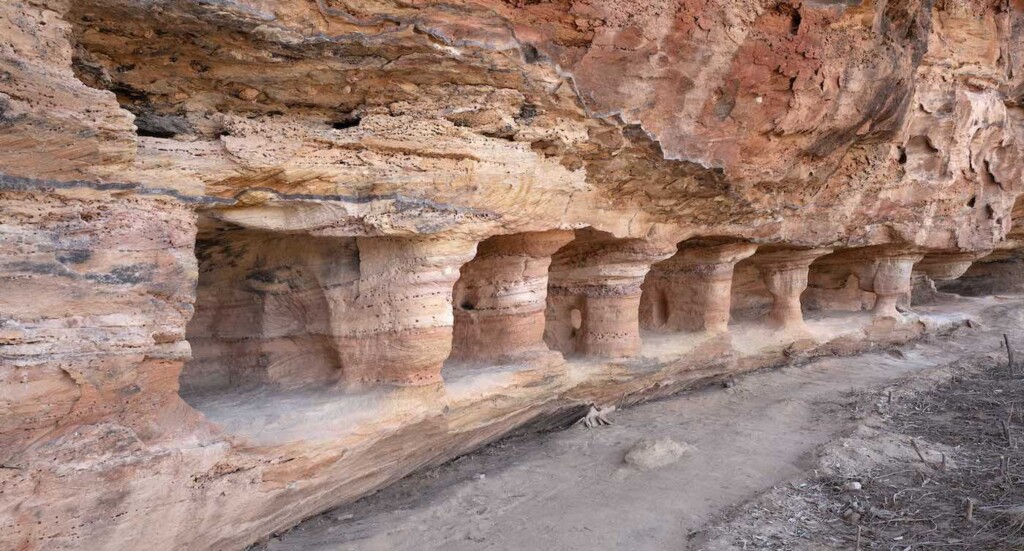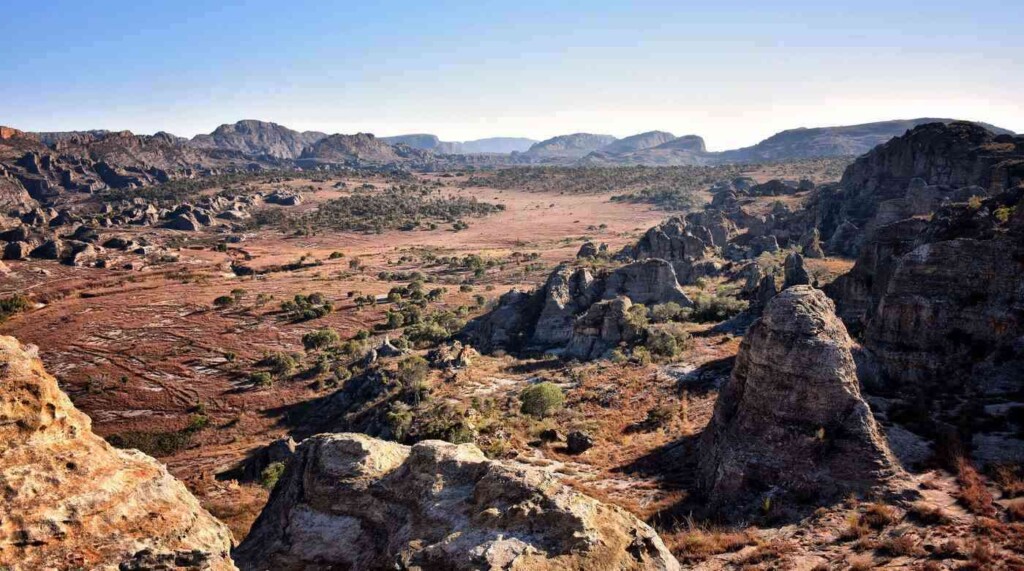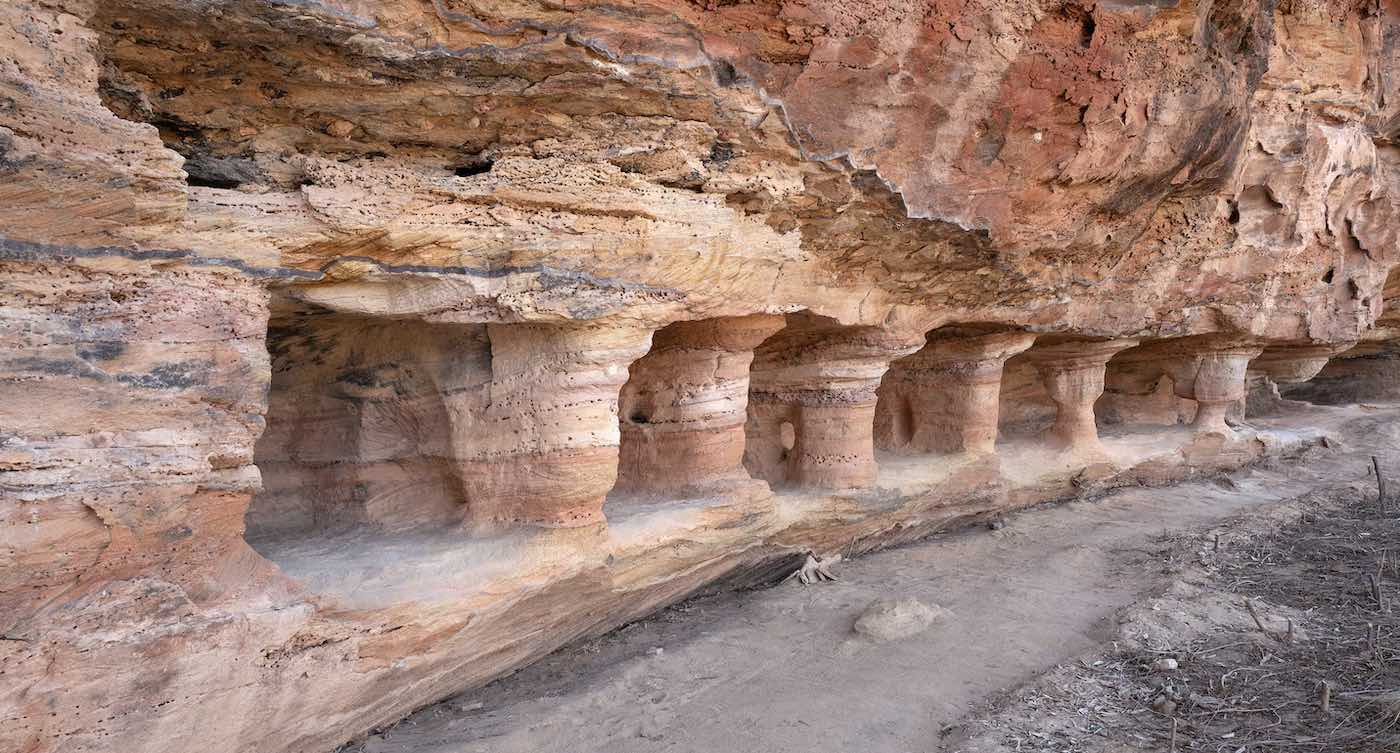
Among the sandstone hills and boulders of Madagascar’s Isalo National Park, the curious archaeological site of Teniky has puzzled researchers for decades.
These rock-cut niches, once believed to be a makeshift shelter for shipwrecked Portuguese sailors, have now been reinterpreted as a sort of Persian Plymouth Rock, founded by religious settlers looking to practice their religion in peace.
Bold theories require robust evidence, and a dedicated Swiss team working at the Teniky site has turned up at least enough to dismantle the shipwrecked sailors theory.
Zoroastrianism was the faith of the early Persian Empire. Established by the Ancient Iranian prophet Zarathustra, it is a dualistic theology that acknowledges both the creative and destructive forces in the universe and holds fire as a sacred symbol. With worshippers in Iran, Azerbaijan, and India, it survives as one of the oldest formalized faiths.
Guido Schreurs, an archaeologist at Switzerland’s University of Bern, has visited the site several times, and was the first to propose that the enigmatic rock-cut niches bear an uncanny similarity to those used in Classical Persia as burial coffers for the dead, according to the Zoroastrian tradition.
For starters, the niches are completely unlike anything found in Malagasy or East African antiquity, and further, the earliest carbon-dated organic remains at the Teniky site indicate habitation as early as ten centuries ago, long before the Portuguese established the route to India.
The scope of the site is also significantly greater than one would expect lost sailors requiring temporary shelter would build. The total area of the site’s architectural features and masonry is about 300,000 square feet, and consists of man-made terraces, rock-cut niches in the steep cliffs, and a rock shelter delimited by walls consisting of carved sandstone blocks.

Complicating the matter further, pottery shards found at Teniky have their origin in Southeast Asia and China suggesting that whoever inhabited Teniky would have had contact with the maritime trade routes that connected Africa and West Asia to the Orient.
But Teniky sits about as far from the ocean as it’s possible to be on the island.
There’s no evidence of agriculture, and no human remains. It’s no wonder the title of the research paper published by Schreurs based on his years of work is “Enigmatic architecture at an archaeological site in southern Madagascar.”
MORE SUCH ENIGMAS: Dozens of Strange 12-Sided Objects from Roman Times Have Been Found—No One Knows What They’re For
Schreurs, according to National Geographic, never bought the Portuguese hypothesis. His research tentatively proposes that Teniky was actually inhabited by a colony of Zoroastrians who departed Iran in the centuries following its conversion to Islam.
By the 10th century when Teniky was founded, the geographical understanding of Eurasia and Africa throughout the Arab world was unparalleled, and it included knowledge of Madagascar—known then as the semi-mythical island of Wakwak.
YOU MAY ALSO LIKE: Mystery of Nazca Lines Deepens as AI Survey Doubles Number of Geoglyphs and Alters Their Meaning
In Zoroastrianism, it’s believed that burying the dead is a defilement of the Earth. Instead, the citizenry would place their deceased in open-air niches cut into the walls of a religious compound known as a necropolis.
Schreurs shows how nearly identical the stone cutting is between Persian necropoli in the Fars Province of Iran and the rock-cut niches of Teniky. The problem is that no bones have been found at Teniky, though Schreurs suggests it could be because they were taken by Malagasy folk for possibly religious purposes.
MORE RESEARCH REQUIRED: 4,000-Year-Old Pyramid Rises From the Soil of Kazakhstan–First of its Kind Ever Found on the Eurasian Steppes
Then, there’s the question of why the site was abandoned. Sections of the sandstone walls are built in a way that suggests a defensive stance. Were the settlers there under attack?
“But against whom?” Schreurs asks. Fortunately for us, Schreurs and his 16-strong team are preparing for another research trip to Teniky in 2025, when maybe some of these intriguing questions will be answered.
SHARE This Great Archaeological Mystery Among The Stones Of Madagascar…




















